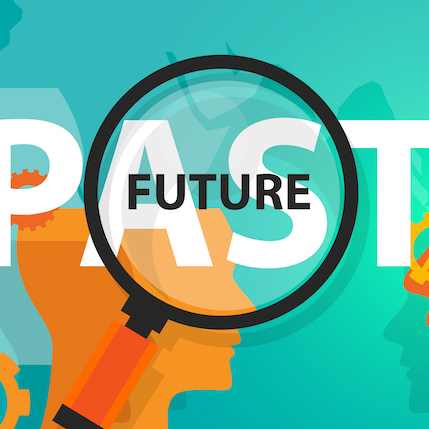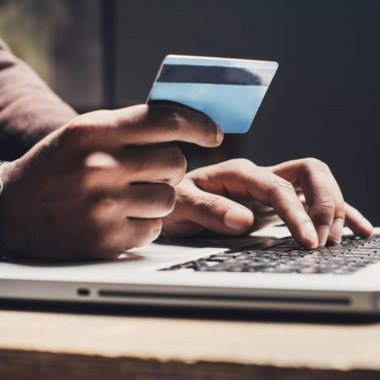
- Five minutes read
The year ahead
What does 2018 have in store for the payments world?
What does 2018 have in store for the payments world? As Niels Bohr once said (or possibly Sam Goldwyn, depending on who you believe), making predictions is hard, especially about the future - a fact that never seems to stop relentless progress and innovation in the tech and business worlds.
Looking back at 2017, there were several game-changing trends that most of the payments industry had seen coming for some time; consolidation among existing players, new competition from the big OTT players such as Facebook and Google, faster and more efficient cross-border payments, new biometrics/face recognition tech and - crucially - more regulation. Just as bureaucracy finds new ways to slow payments down, so science finds a new way to speed them up again - a constant dynamic tension that provides much-needed energy across the payments landscape.
2018 seems guaranteed to follow the same pattern. Everywhere you look, new tools bringing greater speed and convenience to consumers and merchants are emerging, from face recognition technologies to voice-activated services. But at the same time, this year will also see some critical and generally complementary new regulations too. January 13th saw the final deadline for EU member states to complete their implementation of PSD2, the legislative framework which promises to level the playing field for payments services providers across the board. And in May, GDPR finally arrives, adding new layers of protection to consumers and their data. Once again, the push and pull between innovation and regulation provides an important backdrop to the year.
But we think there’s going to be a lot more going on too. Here’s a quick checklist of the areas that we think you’ll need to keep an eye on 2018. We’ll be bringing you our perspective on these in the coming weeks. May your 2018s be prosperous ones!
1. Further convergence of bricks and mortar/digital. The distinction between being/visiting a shop and being at home will continue to diminish; a trend we looked at last year, but which we think will accelerate as the influence of big brands such as Amazon becomes clearer.
2. Single views of customers and their data. A more consolidated view of customer data across channels will be good for everyone; merchants will be able to offer their customers greater rewards based on behaviour, with mutual benefits accruing. Paysafe’s views into data from both sides of the fence makes us an important player in emerging data trends.
3. Voice-activated payments. Smart speakers like Amazon’s Echo and Google’s Home devices are taking over the world. More than 17 million units were sold worldwide in the first nine months of 2017, with a further 16 million sold over the Christmas period. It’s only a matter of time before they become a significant part of the payments landscape.
4. Connected homes and cars. Smart devices will extend way beyond speakers in 2018. Already our homes and cars are connected in myriad ways, and that trend will only increase - affecting everything from domestic commerce to pre-ordering and re-ordering of consumer goods.
5. Smart cities. To date, most of the noise around smart cities has involved transportation and construction projects. But there’s a vast amount of consumer data hidden with payments platforms that can be used to drive progress in building smart cities, as Paysafe is demonstrating as part of a Canadian smart city pilot project.
6. Bitcoin and cryptocurrencies. The jury’s still out on exactly which cryptocurrencies will prevail in payments, but the surge of activity in bitcoin and other blockchain-based currencies in late 2017 served only to magnify their promise. In 2018, we’ll start to see some real candidates emerge in the financial services industry.
7. Strategic alliances and partnerships. Not every partnership yields abundant fruit, but several recent retail alliances in the US show the real potential and power of alliances between digital and analog organisations - McDonalds/UberEats and Amazon/Casper as just two high-profile examples.
8. Invisible payments. The world’s becoming familiar and comfortable with payments that happen behind the scenes with no user interaction - Uber, Netflix and many others have created whole new business models around completely frictionless payments mechanisms. What more can we do to create seamless payments across shared experiences?
9. Superservice. Where do you find real advantage in highly competitive markets? Exceptional service at scale is one answer, but it’s hard to build and sustain. Innovation in payments is a critical aspect of this, from high-end retail to emerging premium versions of Airbnb-like services.
10. Cash and cashless. Cash still matters, but so too does cashless - and in particular contactless, which is finally catching up in the US after years of widespread acceptance in Europe. What will the cash/cashless continuum look like through 2018?
11. Austerity. Like it or not, many countries are still seeing serious economic austerity measures in place - not least in the UK, where uncertainties around Brexit and slow economic growth are still forcing people to think hard about how they spend their money. Products and services built around instalments, such as Paysafe’s own Payolution, will play an increasingly important role in this environment.
12. Beyond GOLO. 2017 was a big year for GOLO, Paysafe’s local shopping app based enabling pre-ordering and pickup from local retailers. What does the next iteration look like? Partnerships with organisations such as At Your Gate, the in-airport personal shopping app, will start to show the way.




